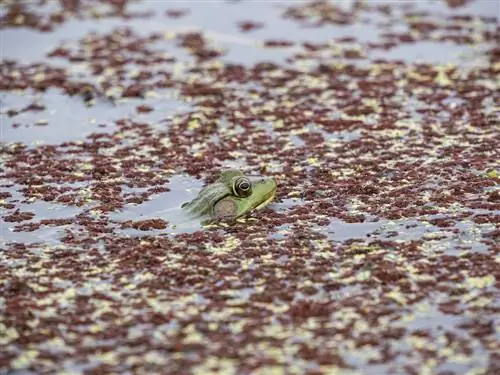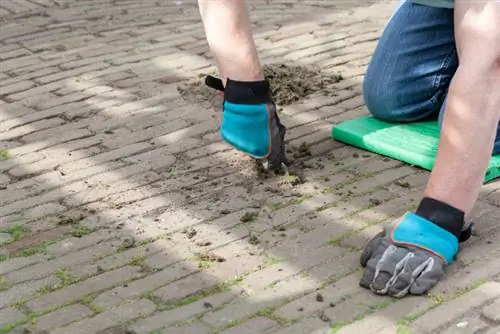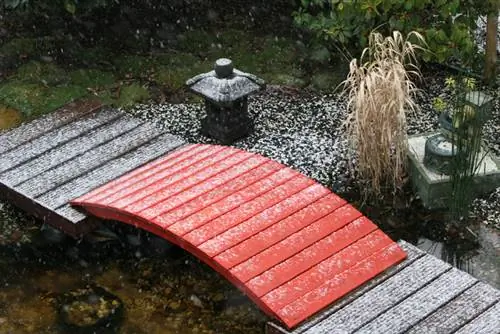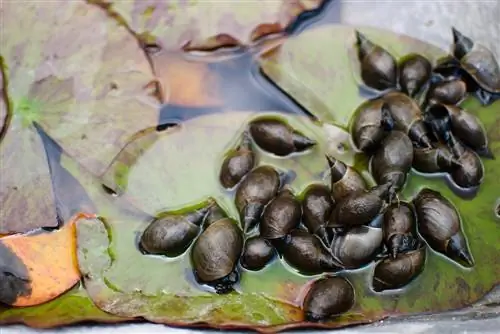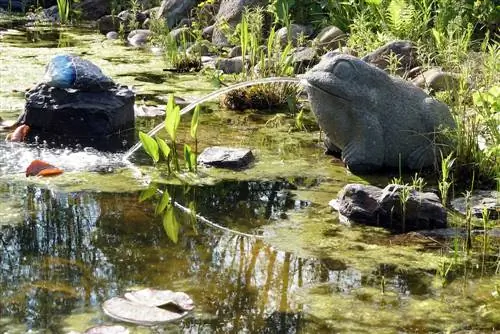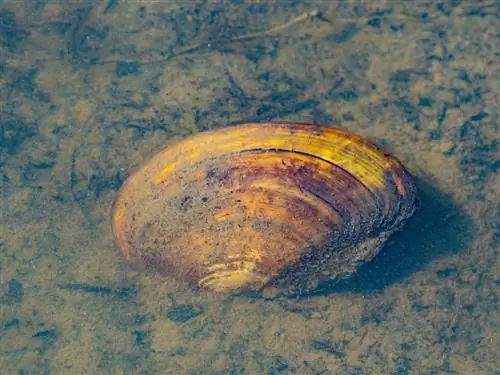- Author admin [email protected].
- Public 2023-12-16 16:46.
- Last modified 2025-01-23 11:22.
Brown algae in ponds are considered particularly unpopular among many hobby gardeners. These are not only unsightly to look at, but also quickly overgrow the system. Removing the annoying growth is often associated with increased time and effort.
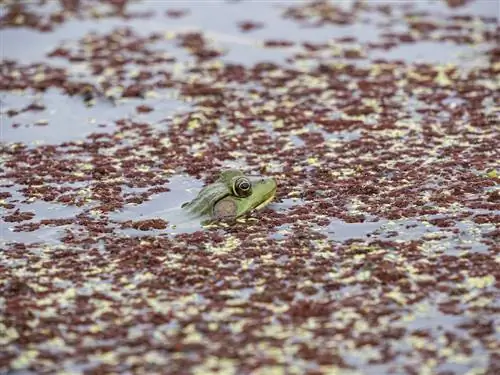
How do I remove and prevent brown algae in the pond?
To remove brown algae in the pond, remove visible dirt, check the pH value, remove algae from the pond liner, use an algaecide and run the pond pump. Preventive measures include site selection, pond plants and the use of algae-eating snails.
How can you recognize brown algae in a pond?
Brown algae in the pond are also called brown algae and can be recognized by theirreddish to brown coloring. The structure of the algae is described as branched and thread-like. In open waters, the brown algae can grow up to 60 meters long. In domestic ponds, it tends to colonize the pond walls and is found primarily in the deeper and darker areas of the garden pond. The plant overgrows the entire pond. The algae should therefore also be removed from the stones in the pond.
How can brown algae be removed from the pond?
Brown algae spread particularly quickly in the pond and should therefore be removed immediately. You should pay attention to someimportant cleaning steps:
- First remove all visible dirt such as leaves and plant remains from the pond water.
- The next step is to check the pH of the water. This must be neither too low nor too high.
- Then make sure that all algae are removed from the pond liner.
- Then mix an algae control agent (€39.00 on Amazon) into the water.
- Finally, you should let the pond pump run for several hours.
Are there measures to prevent the formation of brown algae in the pond?
The pond cannot be completely protected from algae formation, butpreventive measures against growth are particularly helpful. Before you build your garden pond, pay attention to its location. The system must be protected from long-term sunlight, as heat and light promote the growth of algae. Pond plants can also be used to combat algae. These ultimately remove important nutrients from the various types of algae in the pond. Snails such as antler snails also eat brown algae in the pond.
Tip
The right pH value against brown algae in the pond
The pH value is one of the most important factors for the water quality in your garden pond. This should be between 7.00 and 7.40. If the value is in this range, there are ideal conditions for hygienically clean water. However, if this differs, you should use gentle agents such as vinegar or washing soda to prevent the pond water from tipping.

